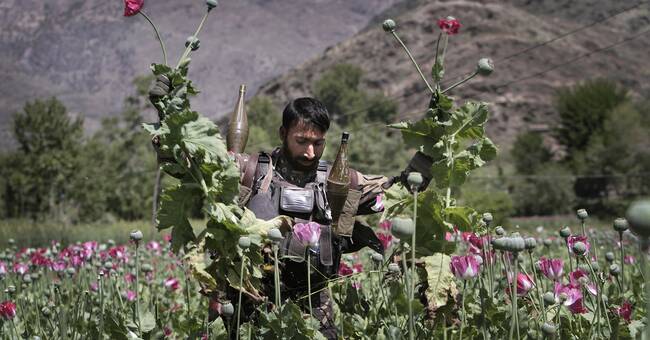Opium poppy has been cultivated around the world for thousands of years and for just as long it has been used to change people's consciousness.
To evoke euphoria, relaxation and alleviate anxiety, but above all to relieve pain.
But it was also realized that the healing power of the plant's milk juice came with a price.
As is well known, the poison is present in the dose and the risk of addiction and sudden death has always been part of the history of the drugs extracted from the plant.
So even today.
While opium poppy is necessary to make some of our most important drugs, it is also associated with death and misery.
The American opioid crisis is an excellent example.
Unbroken demand
Still, demand is steady, for both legal and illegal opioids.
And Afghanistan has done its part to satiate hunger.
Today, over 80 percent of the world's illegal opium crops are found in the country, opium which in turn is used to produce a majority of the world's heroin.
It began in 1979 when the Soviet Union invaded Afghanistan.
The resistance demanded money and weapons, two things that could easily be exchanged for opium.
And when neighboring Iran and Pakistan banned opium cultivation, the field was free.
Suddenly there was a deep hole to fill.
And the Afghan opium industry continued to flourish even after the Soviet retreat and later during the 1990s civil war.
But it was not until after the US invasion in 2001 that the journey to today's record levels began in earnest.
A journey that the Taliban have been on and that has served them well thanks to the taxes levied on illegal trade.
A trade they have now promised to stop.
Something you have actually succeeded in once before.
A soup of stakeholders
As early as 2000, the Taliban banned opium cultivation and production fell sharply.
But it cost.
The dissatisfaction in the country was great, which contributed to the domestic support the Allies received during the invasion the following year.
And today even more Afghans are dependent on the drug trade - so the question must be asked: Why would you succeed this time?
One of the many factors that speaks against it is that the Afghan drug industry is a messy story.
It is not controlled by a boss or a pair of strong cartels, who can turn off and on the tap when they feel like it.
On the contrary.
It is about a soup of stakeholders, from poor farmers through powerful warlords to foreign drug syndicates.
Add that to the geography.
The land is large, the terrain is rugged and the opportunities to grow other crops are few.
But of course, let's play with the idea that the Taliban succeed.
The gains are too great
As demand is still high, even a successful ban will at most mean a notch in the disc for the global heroin market.
Someone else will take over production, just as Afghanistan once did.
The gains are simply too great.
This is usually called the "balloon effect", a term used to describe how inconsolable it can be to try to eradicate illegal drug production.
The air does not disappear when you squeeze the balloon, it just moves.
There is also a darker scenario on the table.
It is conceivable that the supply gap that a global heroin deficiency can cause may well be filled with stronger and more deadly drugs, such as fentanyl, a synthetic opioid that can be manufactured in a lab environment and that has greatly contributed to the enormous amount of overdoses that have affected the United States in recent times. decade.

